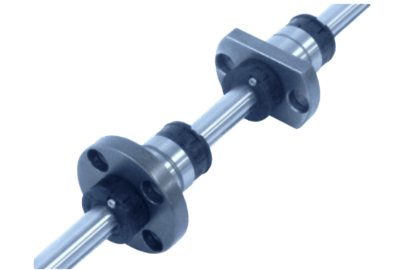What Is a Ball Bearing Spline?

A ball bearing spline is one of the linear motion bearings and is a mechanical element used mainly where smooth linear motion is desired.
A ball bearing spline has a spline, which is a groove continuously dug in the longitudinal direction of the shaft that serves as the axis of linear motion. By sandwiching it on top of the shaft by an outer cylindrical part called a spline nut, smooth axial motion and rotational motion can be achieved on a single axis.
A ball bearing spline has several similar machine elements, but among them, it is the most suitable machine element when a smooth linear movement and rotational movement around an axis are also to be conveyed, while taking a relatively large load.
Uses for Ball Bearing Splines
Ball bearing splines are used in a variety of industrial machinery in situations where rotational and vertical motion are required simultaneously. For example, ball bearing splines are used in robot arm movements and in rotary polishing equipment, where the ball bearing must rotate and press against the workpiece at the same time.
ball bearing splines are also used in conveyor systems and other applications that require smooth, long-stroke single-axis motion.
Principle of Ball Bearing Splines
A ball bearing spline transmits rotational torque by means of rolling balls and a spline fit. First, the rolling motion consists of multiple guide grooves on the outside of the shaft, which serves as a guide, and multiple steel balls rolling between elliptical orbits of arbitrary curvature on the inside of an outer cylindrical part called a spline nut.
The steel balls are coated with lubricant and roll between the spline nut and the spline shaft with very little friction. On the other hand, when the shaft rotates, the steel balls are fitted in the spline groove, so the shaft and spline nut do not shift in the direction of rotation. These two mechanisms allow linear motion along the spline shaft and rotational motion on a single shaft.
How to Select a Ball Bearing Splines
The internal structure of all ball bearing splines is almost the same. However, the load and torque that can be handled vary depending on the spline shaft size and other factors. Therefore, it is important to select the appropriate spline shaft size according to the design of the equipment to be used.
It is also essential to consider options that suit the operating environment, such as using a stainless steel material if the equipment is expected to be used in a space with corrosive gases or humidity, or changing the ball lubricant to a special lubricant for situations where high cleanliness is required.
Other Information on Ball Bearing Splines
1. Rotary Ball Spline
A rotary ball spline is a mechanical element with a mechanism that allows linear and rotary motion in a single assembly. It is characterized by the addition of a mechanism called a cross roller for smooth rotational motion, which is independent of the standard ball bearing spline.
The integral nature of the spline and rotating part allows for a significant reduction in the number of parts compared to conventional mechanisms, and reduces the accumulated errors in installation. In addition, the cross roller is placed directly on the outer sleeve of the ball bearing spline, making it lightweight and compact. It is lighter and easier to install than conventional mechanisms.
Rotary ball splines are used in assembly machines, loaders, and laser milling machines, including horizontally articulated industrial robots called SCARA robots.
2. Difference Between Ball Bearing Splines and Linear Bushings
Linear bushings are rolling-guided linear motion mechanisms and are used in combination with linear shafts to provide infinite linear motion using the rolling of steel balls. The most obvious difference from the outside is that a ball bearing spline has a spline groove on the shaft, while a linear bush has no groove on the shaft.
In a linear bushing, the balls are arranged in a straight line with respect to the bushing, and the balls slide in point contact with the shaft. In contrast, in a ball bearing spline, the balls roll over the grooves on the spline shaft, so the contact area between the balls and the shaft is large and they do not shift in the direction of rotation, so torque can be transmitted at the same time.